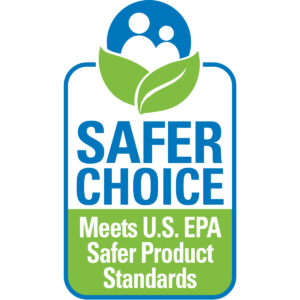Written on: December 1, 2019 by Dr. Steve Bennett
When you peruse the aisles of your local retailer, you’ll likely see many cleaning products with the U.S. Environmental Protection Agency (EPA) Safer Choice logo; however, very few of these will be aerosol products. Why is this? To better answer this question, the Household & Commercial Products Association (HCPA) and National Aerosol Association (NAA) have piloted a project to evaluate liquid propellant formulations with Safer Choice criteria and utilize the results—whatever they might be—as a path to expand options.
Inherently, a cleaning product is the same whether it is delivered via spray bottle, wipe, aerosol or other means with only relatively minor formulation differences to optimize the delivery method. In the case of aerosols, this is often the choice of propellant.

The Safer Choice criteria for aerosol propellants focuses on gases that do not present health or environmental concerns, such as nitrogen, compressed air or reclaimed carbon dioxide 1. Safer Choice has successfully certified products using these types of gases 2. This criteria does not specifically preclude liquefied propellants, but it means that they must be evaluated against the Safer Choice standards and meet the “best in class” benchmarks.
For those unfamiliar with the EPA Safer Choice program, it is designed to help consumers identify products with safer chemical ingredients, without sacrificing quality or performance.
A major strength of Safer Choice is that products are evaluated for efficacy, which helps correct the misconception that clean or “Green” products don’t perform as well as traditional ones. The authority of the EPA, and its ability to bring diverse stakeholders together, ensures the consistency and credibility of the Safer Choice label across products and retailers.
HCPA has long been a proponent of Safer Choice (and its predecessor, Design for the Environment) and was recently awarded the Safer Choice Partner of the Year award for the fourth time in recognition of its efforts to advance the use of chemicals that meet Safer Choice criteria.
The major steps in organizing and developing HCPA and NAA’s pilot formulations for evaluation included:
• Gathering diverse stakeholders with ingredient and formulation expertise;
• Reviewing the non-aerosol product types certified by Safer Choice that would also be effective as aerosols and identifying the areas of greatest opportunity;
• Developing pilot formulations for the selected product types;
• Eliminating propellants with global warming concerns, which narrowed the choices to propane, isobutane, n-butane and mixtures thereof;
• Keeping the focus on the propellant under evaluation; the only ingredients used were verified to be of low concern on the Safer Chemical Ingredient List (SCIL), which is managed by the Safer Choice program.
The formulations were then tested to ensure efficacy and under the internationally recognized and more stringent Globally Harmonized System of Classification & Labeling of Chemicals (GHS) to ensure the final products would not require flammable warnings. The pilot formulations were then submitted for evaluation by Safer Choice.
While the best-case scenario would be for the liquefied propellants to be approved, there are challenges. One major issue is that the flash point test used by Safer Choice to evaluate flammability works for many other types of products, but is not the way the flammability of an aerosol product is normally determined 3. This standard could be expanded to include test methods specific to aerosol products, and perhaps other criteria could be better customized for aerosols as well. Products using certain hydrocarbon propellants may be a great fit for Safer Choice if reviewed under criteria with elements specific to the consideration of aerosols.
Aerosol products have a great story—they are safe, effective and efficient. They can be designed across a wide array of product categories and are valuable in the recycling stream. These are characteristics that are an inherent fit for the Safer Choice label, and including aerosols is a great opportunity to grow this valuable program.
To discuss opportunities for growth, whether by including other chemistry in the Safer Choice standard or expanding the aerosol product form through other means, please contact me at sbennett@thehcpa.org. SPRAY
1 link
2 link
3 Safer Choice Standard 4.2.8